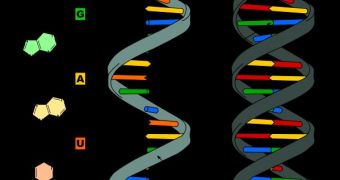The National Science Foundation granted $1.9 million to the University of Maryland, for the acquisition of a superconducting 800 MHz Nuclear Magnetic Resonance (NMR) spectrometer, that will help the investigations on biomolecular structure.
The first to benefit from this new acquisition will be Kwaku Dayie, associate professor of chemistry and biochemistry, as well as principal investigator on the grant, who will use it to advance his research on the biophysics of RNAs (ribonucleic acids).
This is a very important research as RNAs are molecules critical to life, as they play a major role in many diseases that do not yet have effective treatments.
Dayie, who is working with the university's Center for Biomolecular Structure and Organization (CBSO) says that “RNAs do a lot more in cells than we have given them credit for.”
“They can speed up chemical reactions by up to 100 billion fold without the need of protein enzymes, and they can regulate gene expression just as proteins can, so being able to map out their 3D architecture using this high field NMR technology means we'll be able to see more clearly how we could target them for drug discovery and delivery.”
The two other co-principal investigators on this grant are Professor David Fushman and Assistant Professor Vitali Tugarinov from the Department of Chemistry and Biochemistry and the CBSO, and Assistant Professor Ganesh Sriram, from the Department of Chemical and Biomolecular Engineering.
Fushman and Tugarinov's field of expertise is the study of protein structure and dynamics using NMR methods, so now, they will discover the secret behind the interactions between important biological macromolecules.
The NMR will serve Sriram for research in metabolic engineering, changing organisms so that their specific cellular properties are improved.
Thanks to stable isotope labeling he can measure they carbon traffic through cells and develop afterward efficient metabolic engineering strategies.
He explains that “the new higher resolution 800 MHz NMR instrument will enable us to measure isotopes more accurately, and thereby accelerate our understanding of metabolic pathways.”
“We use NMR technology to quantify metabolic pathways in plants or organisms that might be used to produce biofuels or pharmaceuticals.”
In the end, the NMR would have served the research programs of 15 scientific groups from several departments of the University of Maryland in College Park – Chemistry and Biochemistry, Chemical and Biomolecular Engineering, Biology and Cell Biology and Molecular Genetics – as well as in the new Institute for Bioscience and Biotechnology Research (IBBR).
The newly acquired NMR spectrometer will be the highest field on to be located on the College Park campus.

 14 DAY TRIAL //
14 DAY TRIAL //